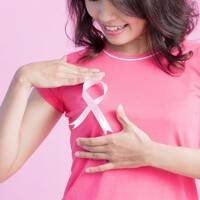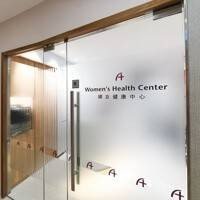Regular Breast Screenings: Key to Early Detection and Health Protection
Breast cancer has been the most common cancer among women in Hong Kong since 1994. Between 1993 and 2022, the number of diagnosed cases increased approximately fourfold. According to statistics released by the Hong Kong Cancer Registry in 2024, there were 5,182 new cases of invasive breast cancer in 2022.
Data indicates a trend toward younger onset, with women aged 40 and above being the most affected group. Among them, women aged 40 to 59 accounted for around 48% of new cases. However, the age-specific incidence rate among women aged 60 to 69 is also notably high, highlighting that this age group faces significant risk as well.
On average, one in every 14 women in Hong Kong will develop breast cancer in her lifetime. Therefore, regardless of age, all women should perform regular self-examinations and undergo clinical breast screenings. Risk assessments by healthcare professionals are essential for early detection and timely treatment, which greatly improves the chances of recovery.
What is the Difference Between Usual Breast Hyperplasia and Atypical Hyperplasia?
Usual Bbreast hyperplasia is a common physiological change in women’s breasts, usually benign, but in some cases, it may develop into there may be “atypical hyperplasia,” which can increase the risk of breast cancer in the future.
Breast Hyperplasia (Benign)
Breast hyperplasia refers to the proliferation of fibrous tissue and thickening of glandular tissue in the breast due to hormonal changes, particularly estrogen. It is common in women aged 30–50, with symptoms including breast swelling, tenderness, or palpable nodules, often worsening before or after menstruation. This type of breast hyperplasia is non-cancerous and typically does not require treatment. Patients can use mammography or ultrasound to assess breast structure and monitor it regularly.
Atypical Hyperplasia
Atypical hyperplasia refers to an abnormal proliferation of breast cells that, while not yet cancerous, resemble early cancerous cells and are considered a “precancerous condition.” Patients with atypical hyperplasia require a biopsy (breast needle biopsy) for confirmation. Research indicates that women with atypical hyperplasia have a 4 to 5 times higher risk of developing breast cancer compared to women without it. Doctors may recommend regular imaging follow-upssurgical treatment or further management depending on the risk level.
Regular Breast Self-Examinations
Many breast cancer cases are detected when women notice unusual changes and seek medical attention early. The earlier breast cancer is diagnosed, the higher the chances of successful treatment. Women are advised to perform self-examinations 3 to 5 days after each menstrual period. For those who have reached menopause, monthly checks should still be carried out regularly.
In addition to self-examinations, women aged 20 and above should schedule regular appointments with specialists for professional breast palpation. This helps raise cancer awareness and ensures better protection of overall health.
Step 1
Stand in front of a mirror and observe your breasts, first with your arms relaxed by your sides, then with your arms raised overhead. Check for any skin changes such as dimpling, puckering, or redness, and look for any abnormal nipple changes or discharge (when not breastfeeding).
Step 2
Lie on your back and palpate your breasts. Use two fingers pressed togetherthe flat pads of the middle three fingers to check the opposite breast, repeating with each hand. During the exam, use the pads of your fingers to gently press in a clockwise circular motion, covering the entire breast (starting from the outer area near the arm, moving inward toward the nipple and between the breasts, then vertically from the collarbone down to the lower half of the breast).
Step 3
Check your breasts while standing. During a shower, apply a small amount of soap to the breast area to allow your fingers to glide smoothly, making it easier to feel for any lumps.
Mammography and Breast Ultrasound — Principles, Procedures, and Benefits
Mammography and breast ultrasound are common imaging methods used to examine breast tissue. Each has its own advantages and is often used together to improve the detection of breast cancer and other breast-related conditions.
Principles
- Mammography: Uses low-dose X-rays to penetrate breast tissue and capture detailed images of the breast structure. It is effective in detecting microcalcifications and early-stage lumps, and is especially suitable for women aged 40 and above.
- Breast Ultrasound: Uses high-frequency sound waves that penetrate the skin and reflect internal breast structures to produce real-time images. It helps distinguish the nature of lumps (e.g., solid or fluid-filled) and is particularly suitable for younger women or those with dense breast tissue.
Examination Procedures
- Mammography:
- The patient stands and places her breast on the X-ray machine.
- A technician gently compresses the breast to obtain clear images.
- The procedure takes approximately 10 to 15 minutes.
- Breast Ultrasound:
- The patient lies down and exposes the upper body.
- A healthcare professional applies ultrasound gel to the breast and uses a probe to scan the area.
- The procedure takes approximately 15 to 30 minutes.
What is the Difference Between 2D and 3D Mammograms?
| Breast X-ray Imaging (Mammogram) | The most commonly used breast cancer screening tool is mammography, which can be divided into 2D imaging and 3D imaging (digital tomosynthesis). These two methods differ in imaging technology and diagnostic accuracy. |
| 2D mammography | Mammography captures two-dimensional images of the breast from two angles (top-bottom and side views), making it suitable for basic screening for most women. However, for women with dense breast tissue (a higher ratio of glandular tissue to fat), 2D imaging may create "blind spots" due to overlapping tissues, increasing the risk of misdiagnosis or missed detection. |
| 3D mammography | It uses multi-angle scanning to reconstruct a 3D image of the breast, allowing doctors to analyze breast tissue layer by layer, similar to "flipping through the pages of a book" to examine details. This method effectively reduces the issue of overlapping tissues, improving the detection rate of early-stage breast cancer or small lesions. It is particularly suitable for women with dense breast tissue or a family history of breast cancer. |
In summary, 3D mammography has higher diagnostic accuracy and a lower false-positive rate, but it is also relatively more expensive. The choice between 2D and 3D imaging depends on individual risk factors, breast tissue characteristics, and medical advice.
Breast Cancer Diagnosis
When abnormalities are detected through breast examinations such as ultrasound, mammography, or clinical palpation, doctors will arrange a breast biopsy to confirm whether the patient has breast cancer. This procedure involves extracting breast tissue samples for laboratory analysis to determine if the tumor is benign or malignant.
Once diagnosed with breast cancer, the treatment plan will be developed based on several factors, including the tumor size, stage, whether it has spread to lymph nodes or other organs, and receptor status (such as ER, PR, and HER2). Common treatment methods include:
- Surgical removal (lumpectomy or mastectomy)
- Radiation therapy
- Chemotherapy
- Targeted therapy
- Hormone therapy
Each breast cancer patient’s condition and overall health vary, so treatment combinations and durations may differ. It is crucial to collaborate with a specialist as soon as possible for further examinations and to develop a personalized treatment plan. Today, overall breast cancer survival rates have significantly improved with early detection, making regular screening and timely treatment essential for maintaining breast health
Symptoms to Watch Out
Early signs of breast cancer may not be easily noticeable and might not be detected through self-examination. However, any of the following changes could be potential warning signs and should be promptly assessed by a doctor:
- A lump in the breasts
- A change in the size or shape of the breasts
- Alterations in the skin texture around the breast or nipple, such as redness, flaking, thickening, or a “peau d’orange” (orange peel-like) appearance
- Rash around the nipples
- Inverted nipple
- Nipple discharge
- Sudden and persistent discomfort or pain in the breast or underarm area
Common Types of Breast Lumps
Breast lumps do not always indicate breast cancer. They are generally categorized into benign lumps and malignant tumors (breast cancer), with some cases related to functional changes such as fibrocystic changes. Imaging examinations and medical diagnosis are essential for clarification.
- Fibroadenoma
This is one of the most common benign breast lumps, typically occurring in young women. It feels smooth, mobile, and usually remains stable or grows slowly. It does not develop into breast cancer, but if the lump continues to grow or causes symptoms, surgical removal may be necessary. - Breast Cyst
A fluid-filled sac that forms in the breast, commonly found in women around menopause. These cysts are usually benign and can be identified through ultrasound. Some cysts may resolve on their own, while others may require fluid drainage by a doctor to relieve discomfort. - Fibrocystic Changes
This is not a true tumor but rather a hormone-related change in breast tissue, often accompanied by swelling, pain, and a lump-like sensation. Most cases are benign, but if symptoms are pronounced or examination results raise concerns, further medical evaluation may be recommended. - Breast Cancer
If a lump feels firm, has irregular borders, is fixed (not easily movable), and is accompanied by symptoms such as skin dimpling, nipple discharge, nipple inversion, or swelling in the underarm, breast cancer should be suspected. Immediate imaging tests and biopsy are necessary to confirm the diagnosis.
Age & Risk Factors
Studies have shown a strong correlation between increasing age and the risk of developing breast cancer. As a result, women of different age groups require different screening approaches. It is recommended that women refer to the table below and undergo regular screenings appropriate to their age and risk level.
|
Age |
Self-examinations |
Mammgraphy* |
|
20-39 years |
Monthly |
- |
| 40 or above |
Monthly |
Every 1 to 2 years |
Since Asian women—especially younger individuals—tend to have denser breast tissue, doctors may recommend supplementary ultrasound screening when necessary. Like other types of cancer, breast cancer also involves certain risk factors that require special attention. If any of the following apply, it is advisable to consult a specialist to develop a suitable screening plan.
- Never having given birth, having a first child after age 30, or never having breastfed
- Early onset of menstruation (before age 12) or late menopause (after age 55)
- Personal history of breast cancer, ovarian cancer, or endometrial cancer
- History of benign breast conditions (e.g., atypical hyperplasia) or lobular carcinoma in situ
- Currently undergoing hormone replacement therapy
- Currently taking combined oral contraceptive pills
- Prior chest radiation therapy before age 30
- Genetic testing confirming mutations in certain genes (e.g., BRCA1 or BRCA2)
- Family history of genetic mutations (e.g., BRCA1 or BRCA2)
Having a first-degree relative diagnosed with breast cancer before age 50
Types of Breast Imaging
After an initial medical examination, if any abnormalities are suspected, further diagnostic tests may be recommended by the doctor.
Mammogram (X-ray Breast Screening)
This screening uses low-dose X-ray imaging to detect potential malignant tumors in the breast. Women aged 40 and above without symptoms of breast cancer are recommended to undergo regular mammogram screenings.
Breast Ultrasound
High-frequency sound waves are used to produce images of the internal structures of the breast, which can show whether the lump is a solid mass or a liquid cyst, or a combination of the two. A breast ultrasound examination can help check the size and location of the lump as well as its surrounding tissue.
Breast MRI (Magnetic Resonance Imaging)
During the examination, a computer-connected magnet emits non-radiative magnetic energy and electromagnetic waves that pass through breast tissue to produce detailed internal images. This helps in assessing whether abnormalities are benign or malignant.
Breast Biopsy
A sample of suspicious breast tissue is removed and sent to a laboratory for testing to evaluate if the lump is cancerous. This diagnostic method is the only definitive way to make a diagnosis of breast cancer.
Tumor Biomarker Test
Once breast cancer is diagnosed, further laboratory testing can be performed on the tumor tissue to identify its biological markers, such as hormone receptors (ER/PR) and HER2 target receptors. This information helps doctors select more targeted and effective treatment options.
FAQ
At What Age Should Breast Screening Begin?
It is generally recommended that women aged 40 and above undergo a mammogram (breast X-ray) once every 2 years for early detection of abnormalities. For those with a family history of breast cancer, it is advisable to consult a doctor and start screening earlier, between the ages of 30 to 35. Early detection increases the chances of effective treatment and better health outcomes.
Does a breast examination hurt?
During a breast X-ray, there is a brief compression sensation, and some people may feel mild discomfort, but it is generally tolerable. Breast ultrasound, however, is usually painless.
Can I perform a breast exam during my period?
It’s best to avoid doing a breast exam during your period. The optimal time is within one week after your period ends, when the breast tissue is softer and less swollen, which helps improve the accuracy of the exam.
Does a lump in the breast always mean cancer?
Not necessarily. Common conditions like fibroadenomas or breast cysts are often benign, but any abnormality should be checked by a doctor to confirm and avoid delaying treatment.




















